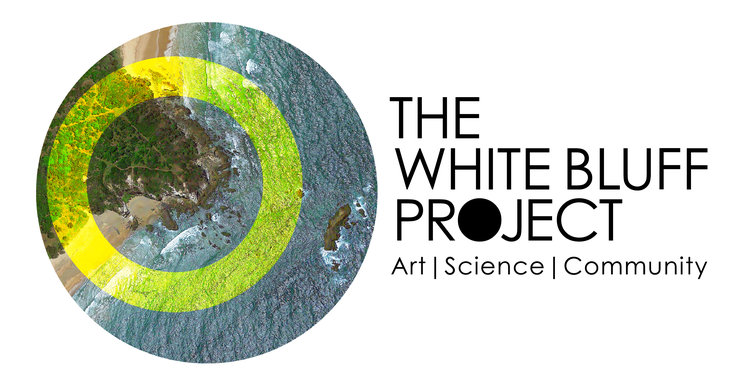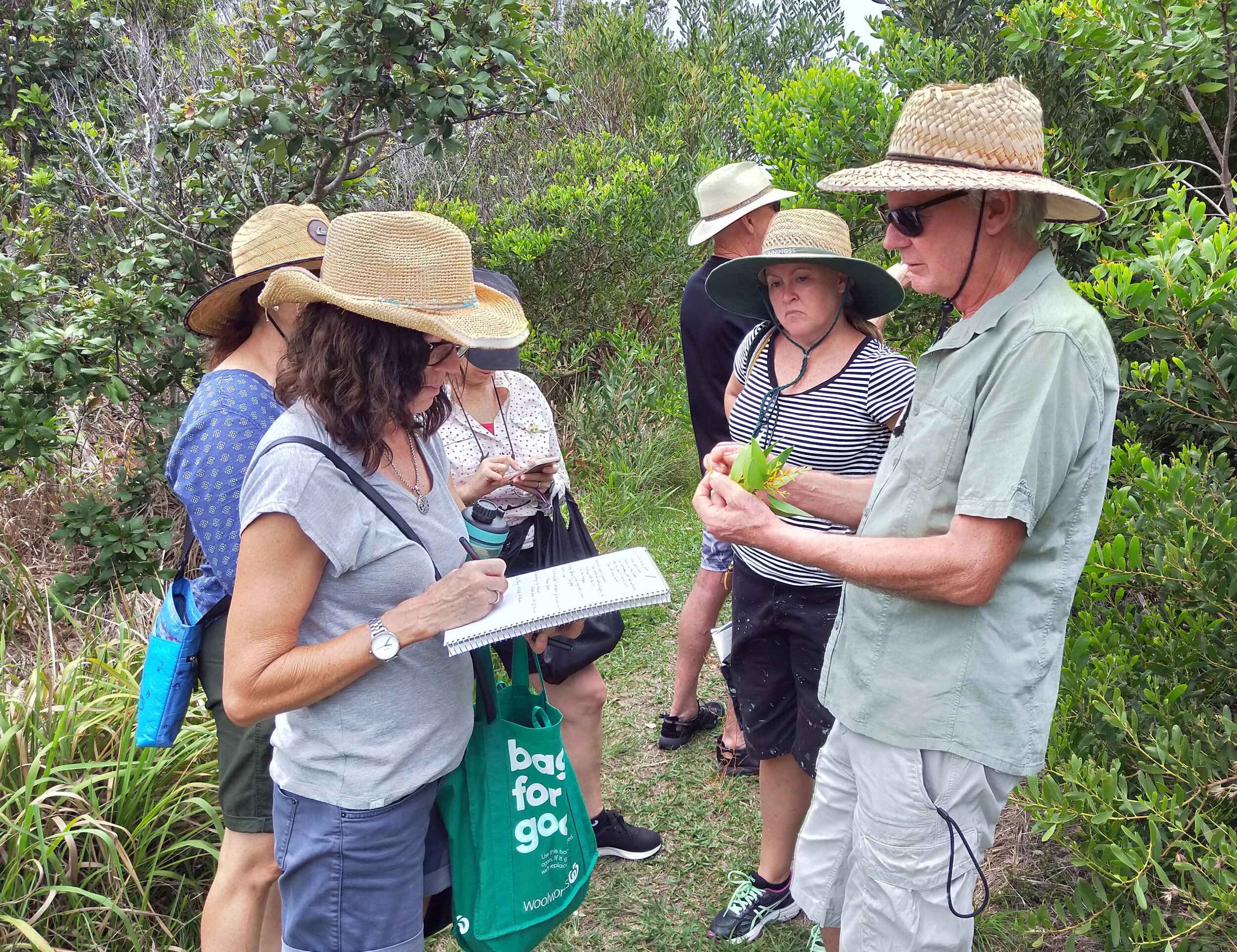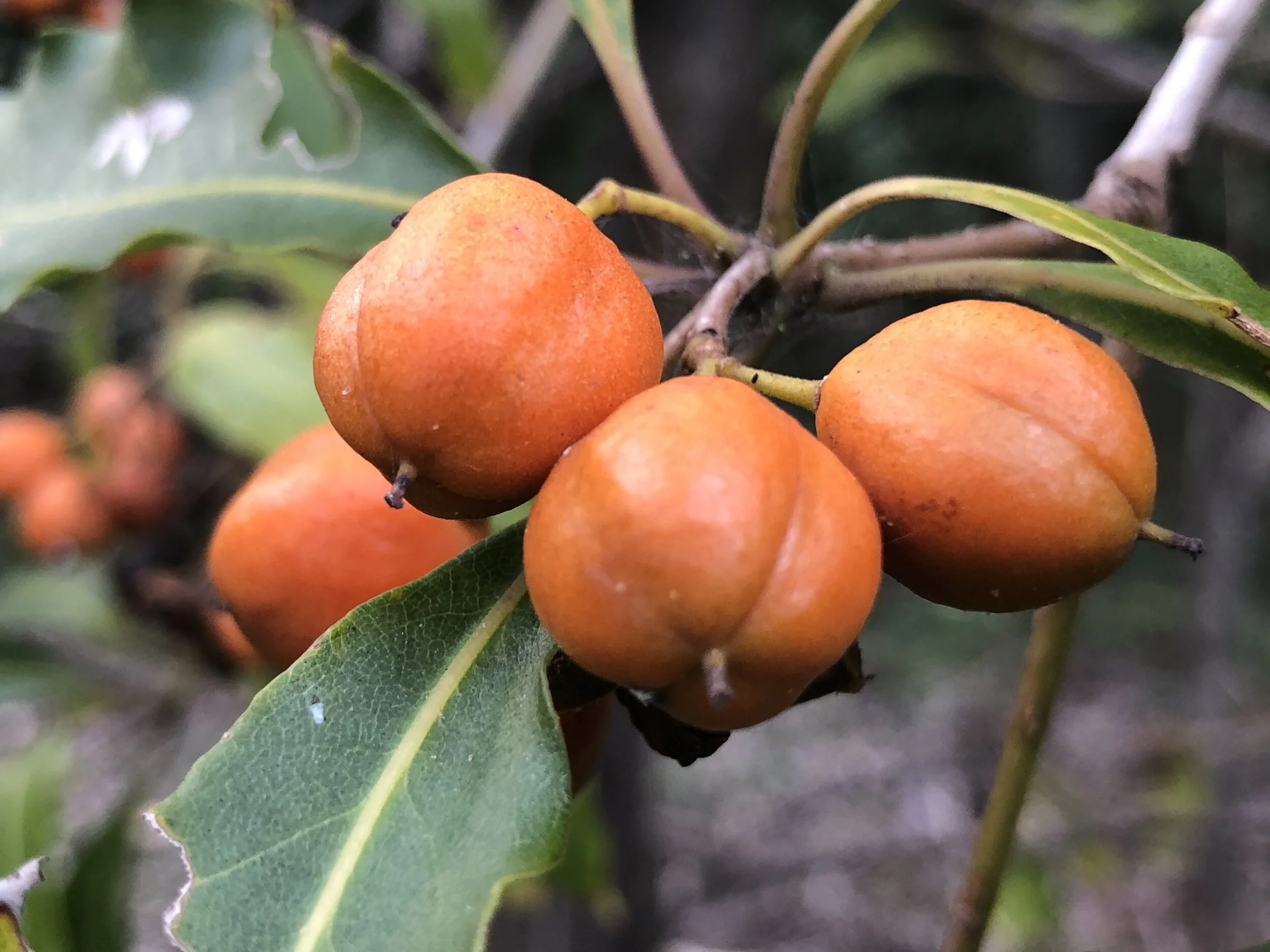The collaborator who has had the greatest influence, in bringing to life the White Bluff landscape for our artists, is botanist Greg Elks.
A scientist first and foremost, Greg is also associated with all sorts of other skills — like field engineering which he applied in landscaping and as a landscape contractor. But in his early science studies he also majored in pure mathematics before developing an interest in Australian native plants and returning to University to study botany, then a masters in ecology with a focus on seeds and seedlings. After years of work as a botanist and ecologist Greg is now an environmental consultant and “sort of transitioning to retirement” where he says he might “take up basket weaving or something”. If he does decide to weave, we now know he will be very good at it, because Greg has shown that behind his scientific mind is a creative one with a deep love and appreciation for the artistic process.
Earlier in the year Greg sat down with our filmmakers Mark and Megan George to discuss his outlook on science and creativity and his involvement in the project. Here’s some of the highlights of that conversation:
When did you first hear about The White Bluff project?
Ray I go way back and one day he said something about the project. Would you be interested? What we need is someone to explain the botany and the ecology?
We've all been amazed at how deep your knowledge is and how it's changed the way that people are viewing White Bluff. It’s kind of brought them along on the journey and they are seeing a whole different facet of the place. For you, has there been any learnings about White Bluff from the people that you encountered in the project?
Definitely. I think the most interesting thing is that everyone sees it in a different way through the prism of their own expertise and experience. Just seeing how people take White Bluff and take on a totally different aspect of it for an artistic project has been really extraordinary.
In the past I’ve only seen a finished art work. I've never seen the way people work. I’m dying to see what is in the final exhibition. What I hope to see is something that makes people more aware of White Bluff as a natural object overlaid with some human history, first peoples history and white history.
Greg Elks (right) discussing botany with White Bluff artists, explaining the flora of the site.
Can you tell me what it was like the first time you visited White Bluff?
I did the coastal walk from Coffs Harbour all the way to Woolgoolga with a group people. It was just another headland at the time. I've never looked at it in detail. It kind of lacked some form of drama and the excitement that some of the other headlands have.
Has your view of White Bluff changed over time?
Definitely. Now that I've looked at it in detail. I have a picture of it that looks much more complete than probably any other headland, apart from Bonville and Sawtell. When you look at something in detail you see things that you don't normally notice. So, yeah, I definitely see it as an outlier in a way that I wouldn't have ever noticed before.
Suddenly last year we had a bit of a surprise and found ourselves in a pandemic? How has this impacted on your work with The White Bluff Project?
It has. I kind of withdrew from pretty much all external contacts and the White Bluff Project kind of ceased to progress as a process where people got together in a group. As did everything that depended on groups. I see Covid as just another expression of climate change. I think the thing that I have had to do as a result of Covid is to join Extinction Rebellion. It's not something I'd ever really considered before but I think well, if you’ve got to protest, let's pick the people who are out there doing it in the most expressive possible way and in a non-violent way.
Is there anything else that you wanted to add about the white Bluff project?
I'd like to see this collaborative model (science and art) continued and extended and I thoroughly recommended it. It might not be for everybody or for everybody’s particular stage of life but, as a way of looking and seeing something different, the deep look, it offers extraordinary benefits. Too much of what we see is just the shallow surface. What we are looking at in reality is a rock with some trees growing on it but the processes of taking a deep look at White Bluff involves looking at how other people see it. It is extraordinarily liberating.



